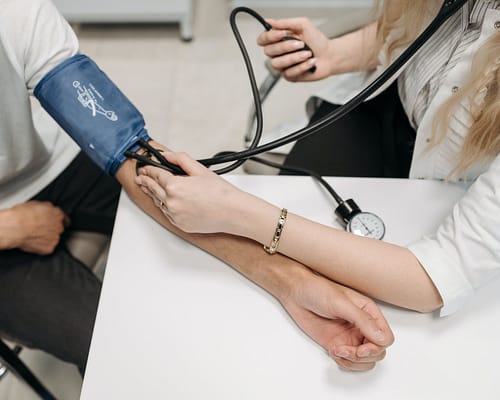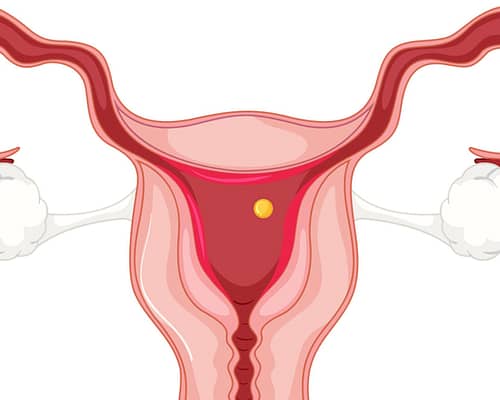
Breast Cancer: Important Things You Should Know
Breast cancer in women is an unwanted and abnormal growth of the cells in the breasts. It is becoming the most common type of cancer in women and the ratio is rising every single day. Breasts are made up of three main parts
- Lobules: Glands that produce milk
- Ducts: Vessels that carry milk to the nipples
- Connective tissues: The rest of the breast is made up of these tissues
The type of breast cancer depends on the parts of the breast it affects. Most breast cancer types start in the lobules or ducts.
Another term associated with breast cancer is; metastasized cancer. It is the condition when cancer spreads to other areas of the body via blood and lymph vessels.
What are the Most Common Symptoms?
The most common symptom is an unusual pain in the breast. There may be different signs and symptoms in different people, and it is better to consult your doctor about any problem or difference in your breast structure. Some of the other symptoms are
- Formation of a lump in breast and underarm
- Thickening and swelling in breast parts
- Irritation or appearing a dimple in the breast
- Pain in nipples
- Nipple discharge
- Change in appearance or shape of Breast
One thing is important to consider here that some women do not develop any symptom though they have cancer. Every woman above the age of 40 should have breast screening at least once a year.
What are the Risk Factors?
Having one or more of the risk factors doesn’t mean that you will certainly get breast cancer. Many people who have these factors never have the disease, and some people with no risk factors develop cancer.
Studies have shown that the risk of developing breast cancer depends on a combination of factors. Age is a significant contributor as most of the cancer types develop in women who are above the age of 50 years.
Factors that cannot be changed
- Age
- Genetic Mutation
- Reproductive history
- Having dense breasts
- Personal or family history
- Side effects of drugs taken in past
Factors that can be controlled
- Physical activity
- Obesity
- Hormonal birth control pills
- Reproductive
- Breastfeeding Alcohol intake
Research suggests that factors such as smoking, exposure to chemicals that can cause cancer, and changes in other hormones due to night shift working also may increase breast cancer risk.
What is Breast Cancer Screening?
Breast cancer screening is checking a women’s breast for early sign and symptoms of cancer. Although screening cannot prevent you from cancer, an early diagnosis can be helpful in the treatment and can improve the survival rate. Consult your doctor about which screening tests are suitable for you and when you can have the test.
Breast cancer screening Tests
Mamogram
Mamogram is a breast X-ray and is the best way to screen cancer in women at this time. The USPSTFexternal icon recommends that women above the age of 50 are at average risk for breast cancer and get a mammogram every two years. Women ageing 40 to 49 should consult the doctor or other health care professional about when to have a mammogram.
Magnetic Resonance Imaging (MRI)
In MRI, magnetic and radio waves take pictures of the breast. MRalong with Mamogram is only used in women who are at high risk because its results are not very reliable sometimes.
Clinical Breast Examination
A clinical breast examination is performed by a healthcare provider, who uses hands to feel for lumps or other changes.
Breast Self-Awareness
Self-awareness is knowing how your normal breasts are looking or feeling for any change. It can help you notice symptoms such as lumps, pain, or changes in size. In case of any abnormal appearance immediately your doctor or health care provider.
Breast Cancer in Men
Mostly the women are the major population which suffer from breast cancer. But males can also have breast cancer, but the ratio is meagre. The types and signs are the same as in women.
What are the Stages of Breast Cancer?
Doctors use the stage and grade system to determine the complexity of cancer to help them decide which treatment you need. There are different systems which determine the stages of breast cancer. The most common is the TNM system and the number staging system.
TNM stages
The TNM staging system stands for T-Tumour, N-Node, M-Metastasis.
- T describes the size of the tumour
- N describes that cancer has spread to the lymph nodes
- M represents the spread of cancer beyond the lymph nodes to other parts of the body
Number stages
Determining breast cancer by stages divides breast cancers into four stages, from 1 to 4. Different numbers describe the level of spread of cancer.
Stage 0 It is a pre-invasive stage. The cancer cells are located in breast ducts and have not started spreading to the surrounding breast tissue.
Stage 1 that the cancer is small and only in the breast tissue or might be found in lymph nodes near the breast.
This is an early stage of breast cancer.
Stage 2 cancer has spread either in the breast or in the surrounding lymph nodes or both.
This is an early stage of cancer.
Stage 3 At this stage, the breast cancer spread from the breast tissues to lymph nodes near the breast or the skin of the breast or in the chest wall. This stage is called locally advanced breast cancer.
Stage 4 cancer has already spread to other parts of the body. This stage is advanced cancer, secondary cancer, or metastatic breast cancer.
What is the Treatment of Breast Cancer?
There are treatments for breast cancer. It depends on the kind and how much it has spread. People with breast cancer often need a combination of treatments.
- Surgery. An operation to remove out cancer tissue.
- Chemotherapy. Particular medicines to reduce or kill cancer cells. The drugs can be tablets or intravenous injections or sometimes both.
- Hormonal therapy. It blocks cancer cells from getting the hormones required for their growth.
- Biological therapy. It works with the body’s immune system and helps to fight cancer cells or reduce side effects from cancer treatments.
- Radiation therapy High-energy rays are used to kill the cancer cells.
Doctors from different specialities often work together to treat breast cancer.
Protective Factors Reducing Risk of Breast Cancer
Being physically active
Various studies have shown that in physically active women, there is a low risk of developing cancer. The risk of breast cancer falls by 5% in women who two vigorous exercises for two hours per week. An activity can include:
- Have a physically active job
- Do recreational exercise like walking, cycling or playing any physical sport
- Home chores such as ironing, gardening and cleaning
The low risk is attributed to lower levels of insulin, hormones and growth factors in the body due to regular exercise.
Breastfeeding
Breastfeeding lowers the risk of breast cancer significantly if you have become a mother when you are younger. The longer you breastfeed your child, the more the risk is reduced.
It is not completely clear why the risk is low. It can be due to low egg production from ovaries during breastfeeding. Or it might be because breastfeeding the cells in the breast may become resistant to changes that cause cancer.
Aspirin and anti-inflammatory drugs
You shouldn’t take these medicines without consulting a doctor for a prolonged time if you have a history of stomach ulcers.
Treatment for high-risk breast cancer
Some women family history of breast cancer and have a higher risk of developing it. There are medicines and surgical procedures which help reduce the risk of breast cancer for those at an increased risk.
Medicines for women at higher risk of breast cancer
“The National Institute for Health and Care Excellence (NICE) recommends that medicines be offered to some high-risk women to reduce the risk of breast cancer. These are:
- tamoxifen for 5 years if you are premenopausal
- anastrozole for 5 years if you are post-menopausal
- raloxifene or tamoxifen for 5 years if you are post-menopausal and you cannot take anastrozole
Your specialist doctor might also talk to you about these medicines if you have a moderate risk of breast cancer. All these drugs have side effects and are not suitable for everyone. Speak to your doctor who can tell you whether these are suitable for you. You do not need to take this medication if you have had surgery to reduce your risk of breast cancer.”
Surgery for high-risk Breast Cancer
Surgery to remove breasts may be a treatment option for women at very high risk known as a bilateral risk-reducing mastectomy. In this operation, the surgeon removes the maximum of breast tissue, but it’s not possible to remove it all. Although surgery lowers your risk, it does eliminate it.
The Bottom Line
Breast cancer is a complicated disease for women not only physically but aesthetically too. Your doctors and nurses support you when making your decisions and throughout the treatment, but women need family more. Speak to the doctor today, if you have family members with breast cancer and you think they might be at risk of developing it.





